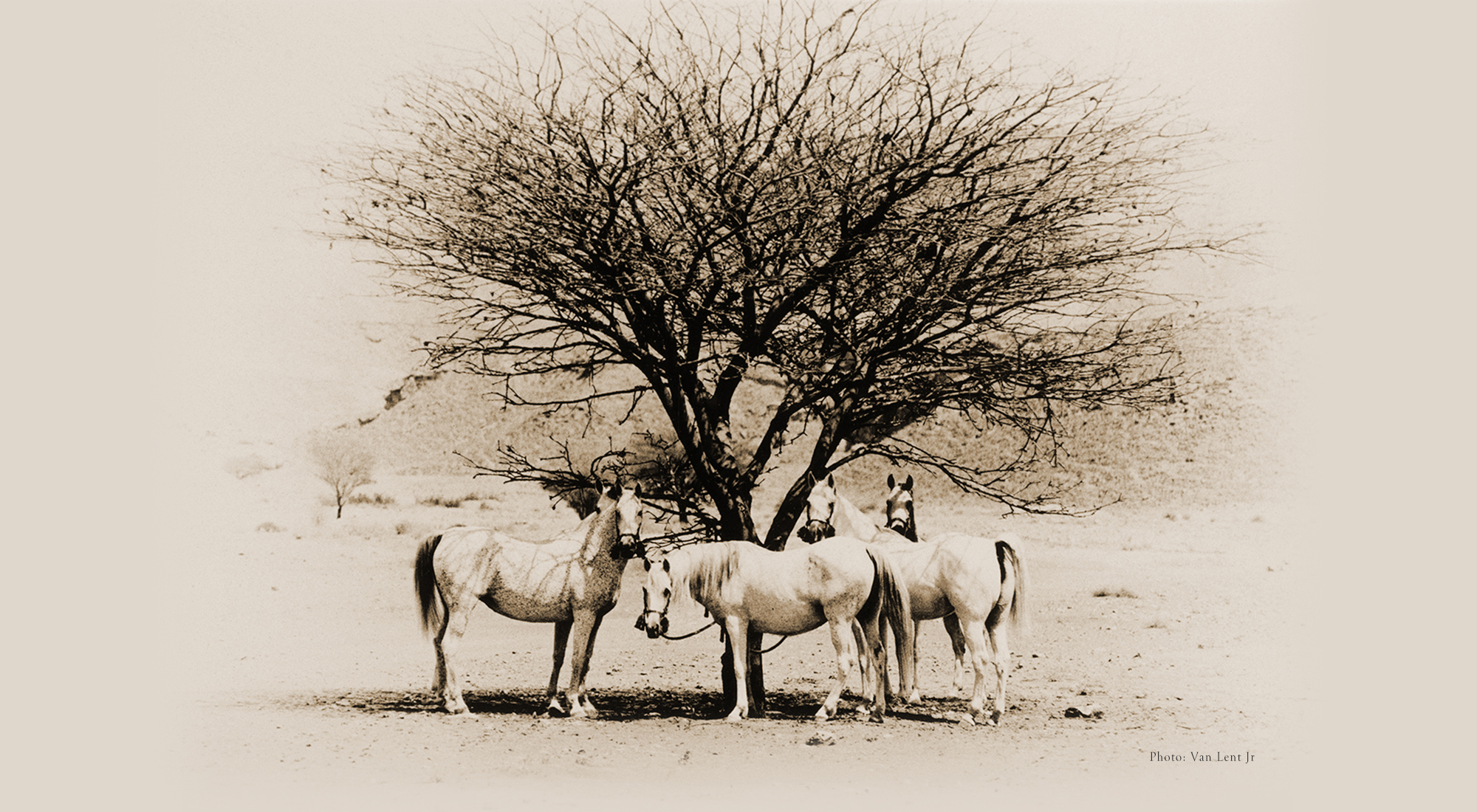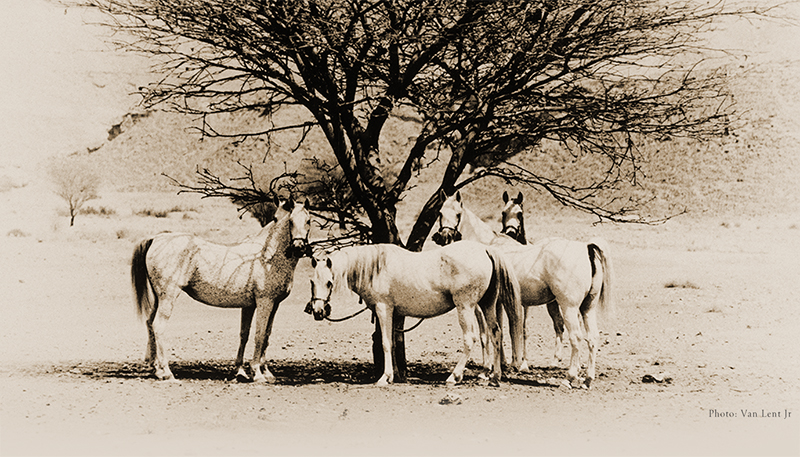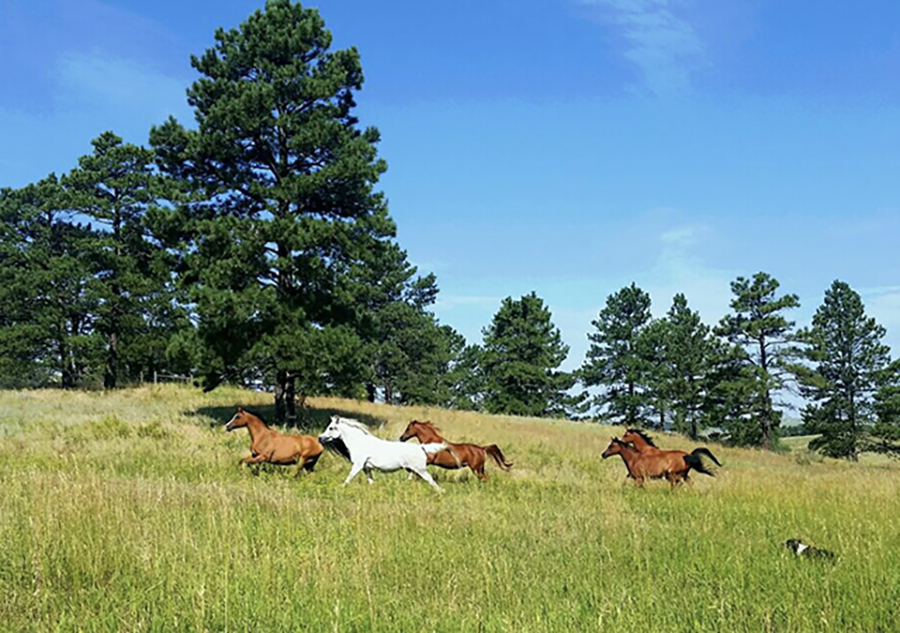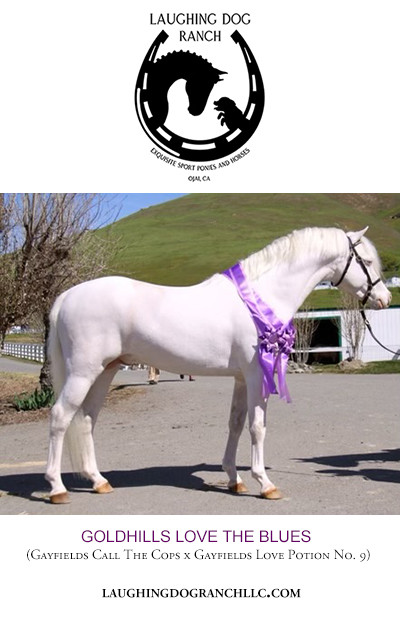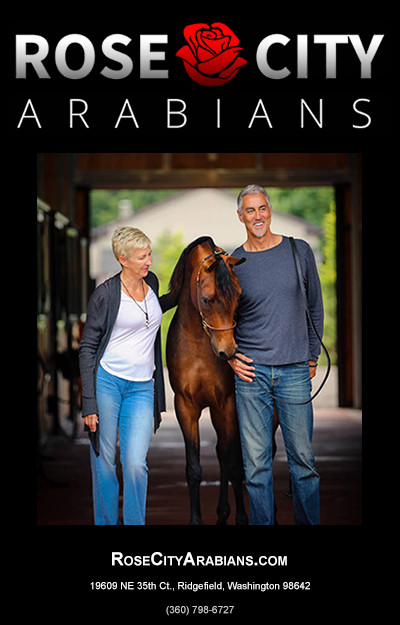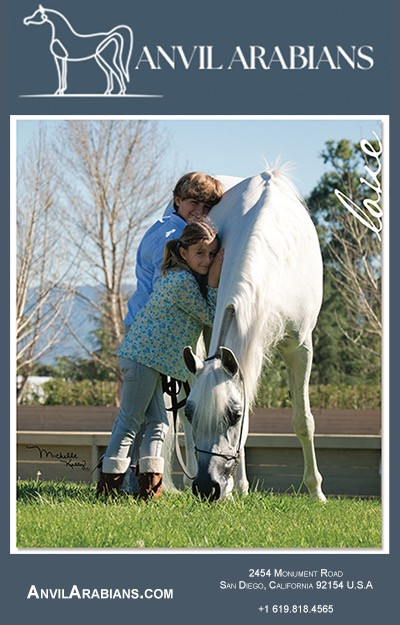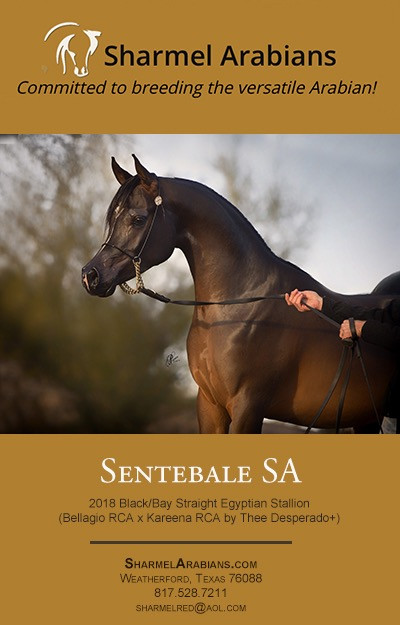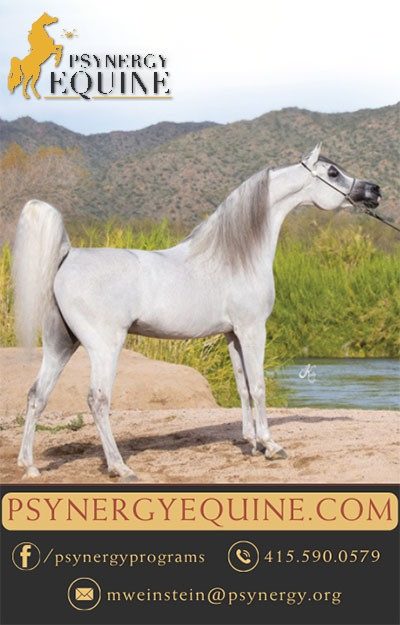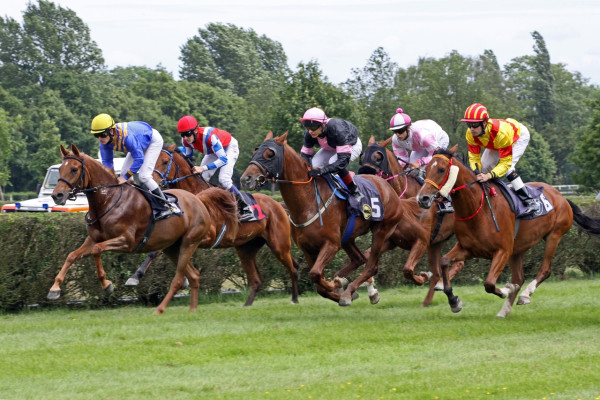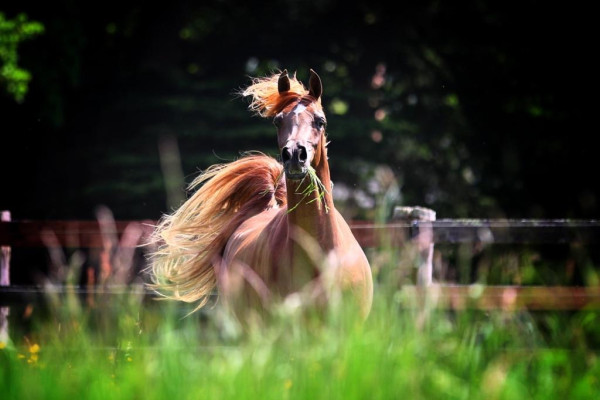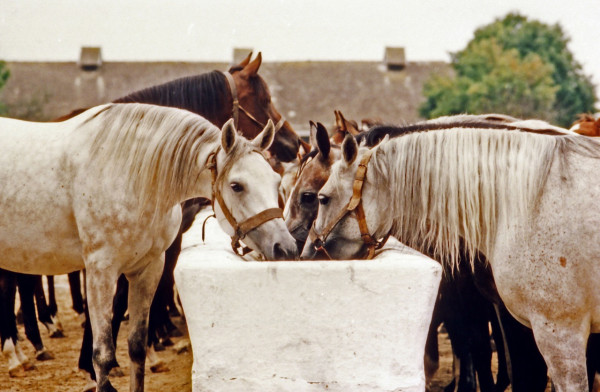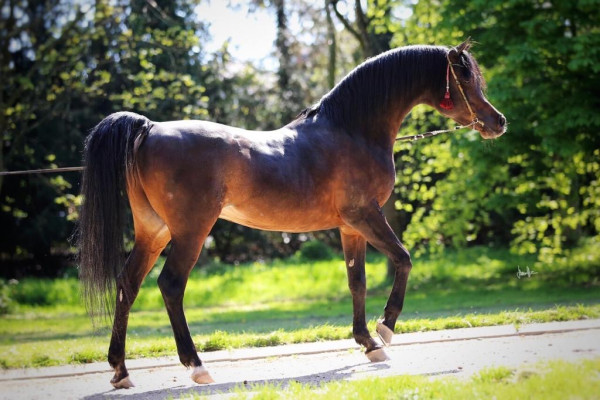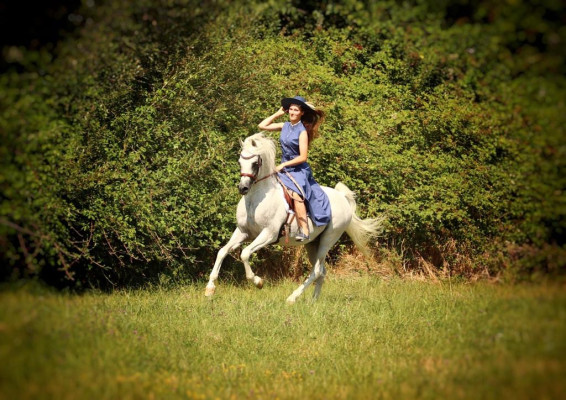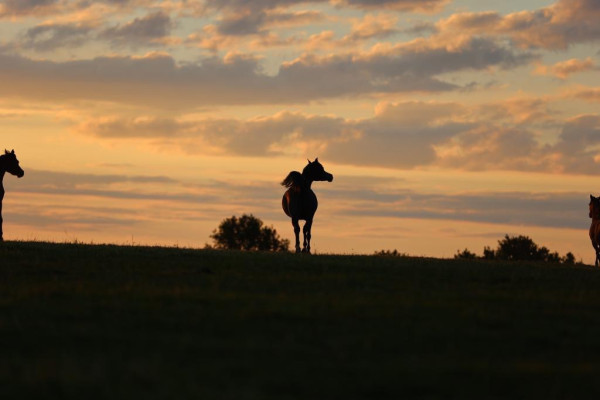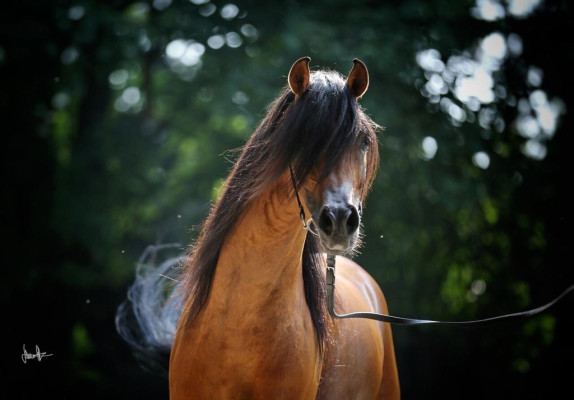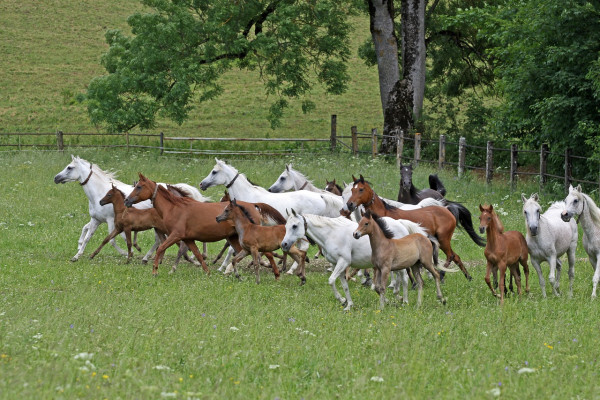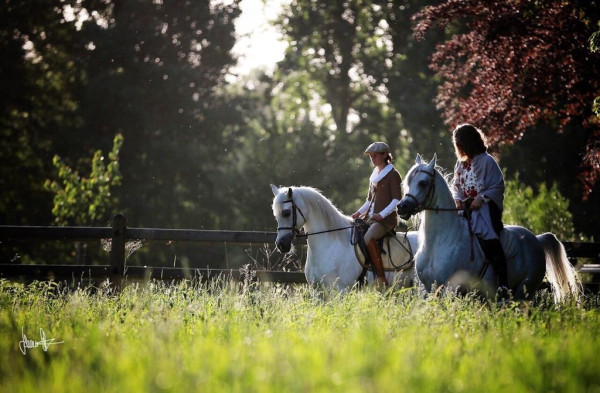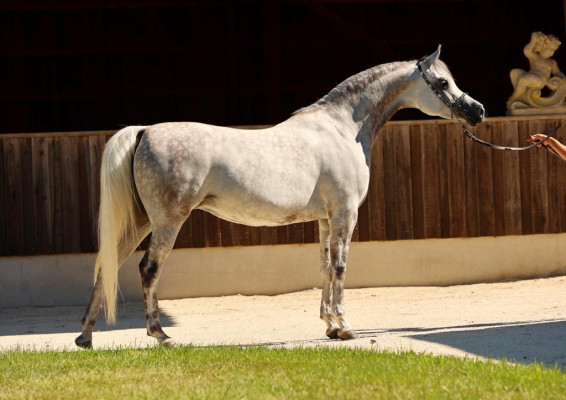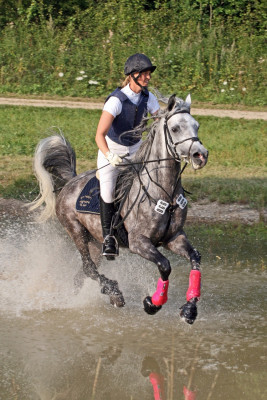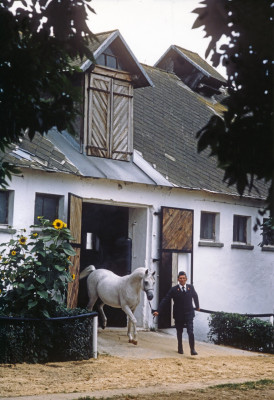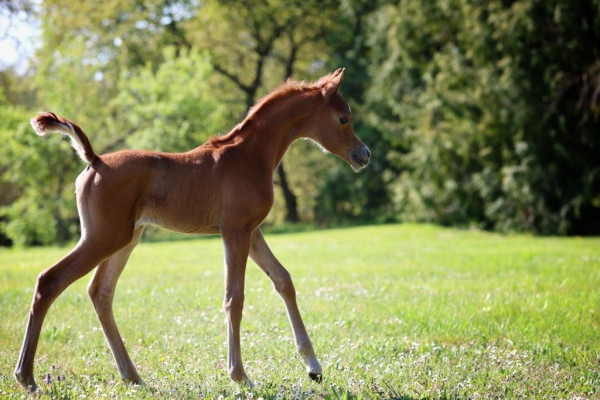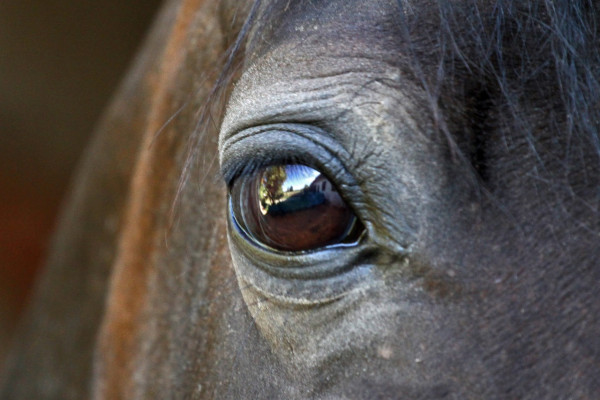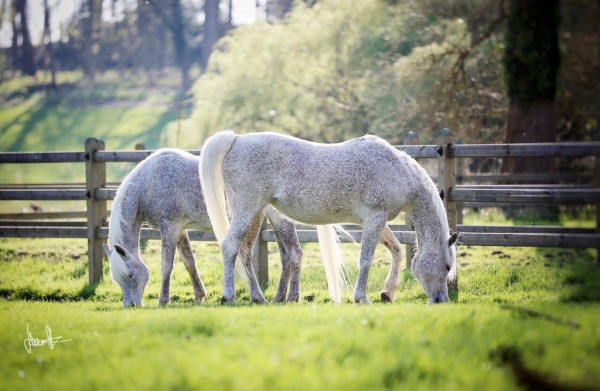Wintersteen Arabians — Summer of 2007
By Jeffrey Wntersteen
Wintersteen Arabians is a small family-run Arabian breeding operation outside of Elizabeth, Colorado. Concentrating on primarily Polish bloodlines, it made sense when they started sending their home-breds to the racetrack as well as shows. Jeff began exercising the family horses at the public track in 2000, and took over race training responsibilities in 2002. Also a writer, he started chronicling some of the triumphs, heartbreaks and day-to-day life in 2007. Here are some of the family’s exploits for the summer 2007.
April 25, 2007
I read “A Colorado History” this winter, and one of the more interesting periods was the settlement of the state’s eastern plains by farmers in the mid 1800s. They were lured to high arid flats by claims of period scientists that the rainfall associated with the Eastern and Midwest states was slowly moving west, in turn making this land farmable for a variety of crops. Of course, the four-year trend proved to be a minor aberration in the Colorado climate, forcing those new farmers back east. I only mention this as Colorado has always been an arid state, and the current drought we are experiencing is probably more the norm than not.
The drought, however, had a slight respite the past 32 hours with wind, rain, and heavy snows that toppled some of the farms hundreds of years old ponderosas pines. They had already endured drought brought beetles, which killed 60 or more of these trees on the farm — the cleanup is still ongoing. That the needed moisture is taking down some of the surviving trees is ironic. The new snow also adds to the workload in plowing the training track and draining off the round pen in an effort just to return to the chores in which we are already behind.
Life, however, is unpredictable, those precious fillies should be treasured as this young fellow reminds us.
The three-year-old filly WA Borkata (WA Pejczyk x *Boruta by Alegro) — also had a mixed reaction to the new snow. Newly shod in preparation for galloping at the track this spring, her feet were balling up with snow, making a puzzle she was finding difficult to work out.
May 11, 2007
I pulled into Arapahoe Park mid-morning after dropping my son off at preschool. The high plains were a sea of green with snow covered Mt. Evans and Longs Peak dominating the horizon. The sky was cloudless with not a breath of wind. I was dropping off a blanket for Brilliance SF (*Pepton x Brillant Light by *Probat) and getting my trainer’s license renewed. Brilliance was due for a mile gallop; she had been stalled in Darley-winning trainer Liz Brand’s barn since the track opened a couple of weeks ago. Liz, my racing mentor, oversaw her successful Texas campaign last fall. Brilliance dragged her exercise rider, Nathan, most of the mile, and when I asked how she was, Nathan responded, “This filly just wants to rock and roll.”
As I walked with them back to the barn, I was awash with why I love racing so much. Though the competition, the thrill of the gallops and the pure joy the horses show in their work is all an important part, I realize the look of a fit, well-conformed Arabian racehorse is the real reason. Brilliance was a vision as she bounced next to me, her dark bay coat stained in sweat, nostrils flared, long neck arched in the bridle.
The next stop was the farm to gallop Borkata and WA Miss Emaranta (*Emanor x Melissa SA by Bandit SA). I threw the exercise saddle on three-year-old Borkata for the first time as the old Stübben I had been using had a tendency to creep up on her. I hoped I wasn’t going to miss the legs rolls and deeper seat. Borkata was near perfect, save for one spook. She was kind enough to do it at the same spot each time which, surviving the first, knowing it was coming, kept me out of the dirt for the remaining three laps.
The last of the day was Emaranta, she was a bit sluggish and will get a couple days off. I have been pushing her hard for a week, but she will bounce back. Next week she will go to the track, with no races for her in the first book. I didn’t see why I need to rush up there. Earlier in the day I saw her jockey, from last summer. She ran a third with him in her second start — despite Marc being a bug, they were a good team. [A bug refers to an apprentice jockey.] Since Emaranta is the one running the race, I try to let her pick who she wants on her back. I yelled across the gap if he would ride her again, “absolutely” came the reply with no hesitation. A jockey with no enthusiasm for your horse is not worth giving a leg up. If we can get a two-turn race for her, she has a nice shot. Purse and Colorado-bred money will buy some hay for the winter.
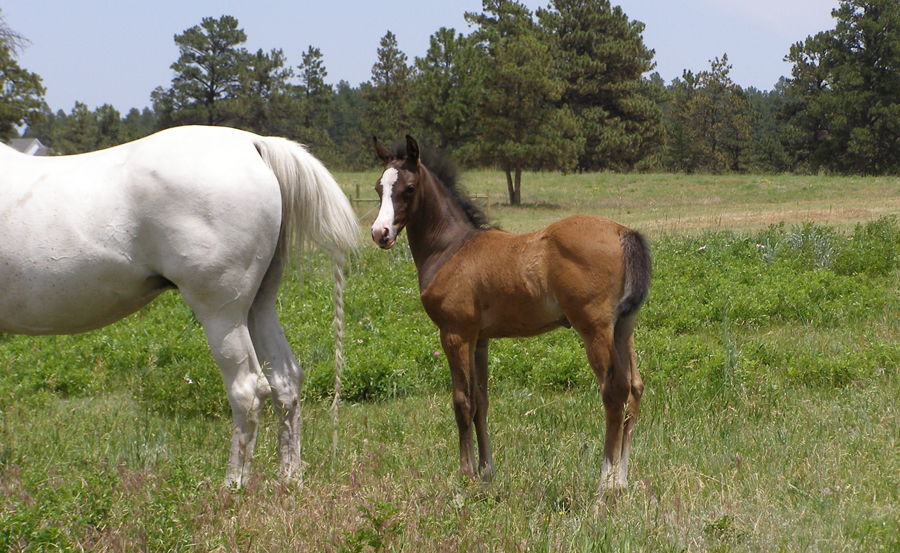 WA Pejczyk colt foaled spring of 2007 out Estansia (Monogramm x *Erwina by Palas).
WA Pejczyk colt foaled spring of 2007 out Estansia (Monogramm x *Erwina by Palas).
May 22, 2007
I was away when I got an excited call from mom — Estansia (Monogramm x Erwina by Palas) had her WA Pejczyk (*Europejczyk x Phyllan by *Bancock) foal, a grey colt. The arrival was about right according to the chart, but we had been expecting him for a couple weeks as she was showing signs of an early delivery. Estansia is a sneaky one though, and doesn’t advertise too much as most of her previous foals have been found in the morning alert, up and nursing — all this despite video monitors in the barn. Monitors, of course, demand the viewer be awake to be useful!
As is most often the case, we had hoped for a filly especially since the two previous foals out of Estansia were also colts. Estansia’s only filly, her first foal, was sold at a few days old — misguided confidence that the farm can produce another easily. Life, however, is unpredictable; those precious fillies should be treasured as this young fellow reminds us. A healthy correct foal regardless the gender, however, helps erase any disappointment.
June 5, 2007
There is a tired cliche: the horse business highs are few compared to the plentiful lows. Tired it may be, it rings true as the last few days have born witness. Story begins with our “Oops baby” — a Pejczyk daughter out of his mother. Yeah, you read correctly, the result of a two-year-old colt out to pasture with the mares. Pejczyk was so docile and laidback, we thought he had some serious testosterone and fertility issues. That clearly proved not to be the case, Pejczyk was just not one to kiss and tell. We didn’t even realize Phyllan was in foal till we spent the spring trying to fit up a pregnant mare — not our proudest moment.
Winning races demands experience and knowledge, but just as important is enthusiasm and confidence.
To this inauspicious beginning came Piekna — Polish for “Beautiful” — an inappropriate use of the name, something few would argue. Despite lack of womb nutrition, we did our best to give her the attention any horse deserves. With not a lot of positives, not the least of which a useable pedigree, left her off the list for breeding, and sale candidates. After being started under saddle on the farm, Piekna accompanied her dam to Texas and in the care of my niece so she would have a horse to ride. Piekna went to a trainer for finishing up; he deemed her “untrainable.” That my 10-year-old niece assumed the role and started riding her over fences speaks volumes of that particular trainer’s talent. “Pets” don’t enhance the economic viability of a breeding operation, which means Piekna needed a home. After several no takers over the years, Piekna was donated a month ago to a farm that took care of abused children. We had hopes that she had found her place in this world, as she was the favorite of a couple of ten-year-old boys. Two days ago we got a call from the program director that Piekna had been kicked, and her leg shattered. My parents immediately left to see her. Nothing the vet and staff could do, but they waited till my parents arrived as a courtesy for them to say their goodbyes before she was put down. Piekna was brought back to the farm and laid to rest next to one of our most esteemed breeding successes. As mom explains to my three-year-old son, “So I can remember her every time I walk by” — proof that ribbons won or dollars earned are not a barometer of emotional attachment. Through her tears, my mother summed it up best, “I just wish she had had a better life.”
The next day I saddled Brilliance for an allowance race. She was the morning line favorite by the handicappers, having been first or second since August in her campaign from Colorado to Texas. Fighting the rear wraps, and a loose horse on the way to the saddling paddock, did nothing to settle an edgy filly, laying waste to our best laid plan. Brilliance galloped home last. She was as frustrated as me on the way back to the barn. Simple law of the horse business should have predicted the outcome — highs come by themselves, the lows in torrents.
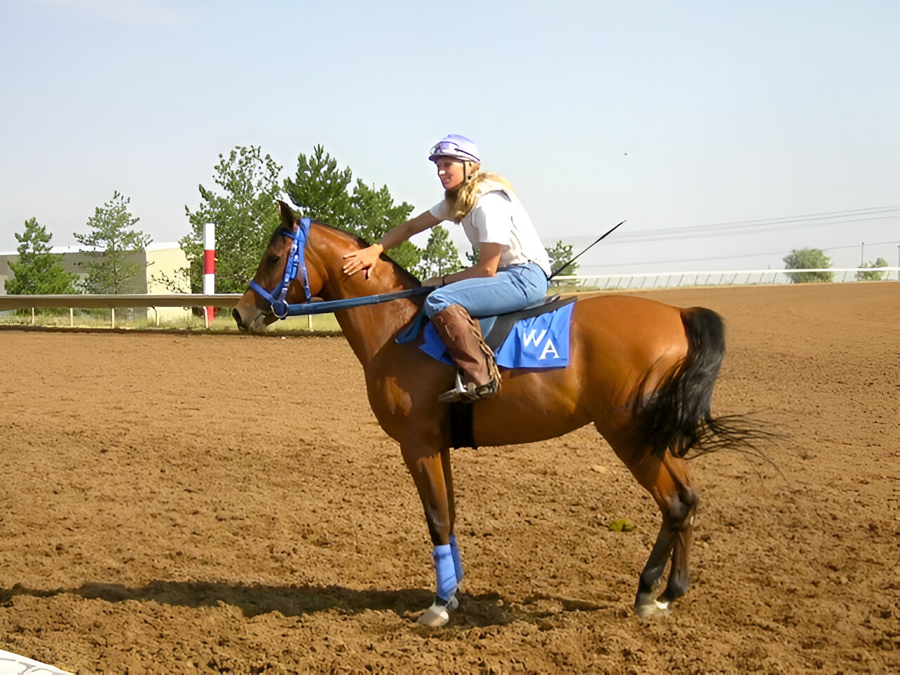 Polly Robson returning from the first work aboard WA Borkata (WA Pejczyk x *Boruta by Alegro).
Polly Robson returning from the first work aboard WA Borkata (WA Pejczyk x *Boruta by Alegro).
June 10, 2007
Emaranta’s official work was the fastest of the day going a 1/2 in 54.6. Marc was in the irons, and grinning coming off the track. Emaranta is showing more speed than last year, as I caught her through the first 3/8ths in 39 and change. I am excited about the effort, the best of her career so far. Marc loves her, and can’t keep from saying it over and over. I hope that his enthusiasm and Emaranta’s approval of him will get them a clear late stretch. Winning races demands experience and knowledge, but just as important is enthusiasm and confidence. Watching the team I assembled bouncing next to me, Emaranta’s tail over her back and snorting with Marc lying on her neck and talking in her ear, this duo clearly thinks they can win.
June 17, 2007
Doing the usual morning hustle at the track in getting everything lined up for Borkata’s first official work when I passed a walker full of Thoroughbreds. Something had just set them off; the snorting, tails flagging, and floating movement of these 16+ hand running machines gave me reason enough to stop and watch the spectacle. It was proof the Arabian blood, despite generations back, really isn’t buried that far below the surface.
Back to the real business of the day, confirming with “Wild Bill” who is to be up for the pending work. The racetrack is the ultimate free market with the economic ebb and flow of everyone — trainers, jockeys, agents and exercise riders — all trying to move themselves up a notch. Loyalty lasts for the length of a ride, business is business, and those who take things personally won’t last long. Billy is “bunched up” and can make no promises on getting her out. No surprise — everyone will ride your winners, however, few raise their hand for a non-starter. Plan B turns out to be better than Plan A, as I see Polly Robson who worked for me a several years back when I first got my license. She says she can get to me third after the break. [“The break” refers to 8:30 a.m. when the track is closed for 15 minutes for tractors to re-work the surface.] She was always first call on Pejczyk and a large part of his success in winning. Her quiet demeanor, superior schooling skills, and innate feel of the horse are tailor-made for today’s work. In addition, her being on Pejczyk’s daughter for her first speed is beautifully poetic, and I can’t help but smile at my luck.
I legged Polly up with no martingale and stirrups up short, which on the backside means speed. Borkata senses this is not the usual gallop and is a little bit on edge. Polly listens to my instructions, “Just take her around the long way, work from the 3/8ths. This is just a schooling work, let her stretch out on her own.” I hope my voice conveys none of the nervousness I feel. Polly trusts that I have Borkata prepared for this next step, though I suddenly wish I could do one more gallop on her.
Not the fastest work, but Borkata stretched out down the lane coming home in 13 and change for the last 1/8, a time which hints at a possible turn of foot. Borkata was well within herself and still pulling around the turn. Polly is all smiles coming off the gap, “What a mind this filly has!” she gushes. Borkata would do great with company next time Polly says. A gritty filly that is like her father — Polly wants to stay aboard for the next work and I am happy to have her — both of us thinking we moved “up a notch.”
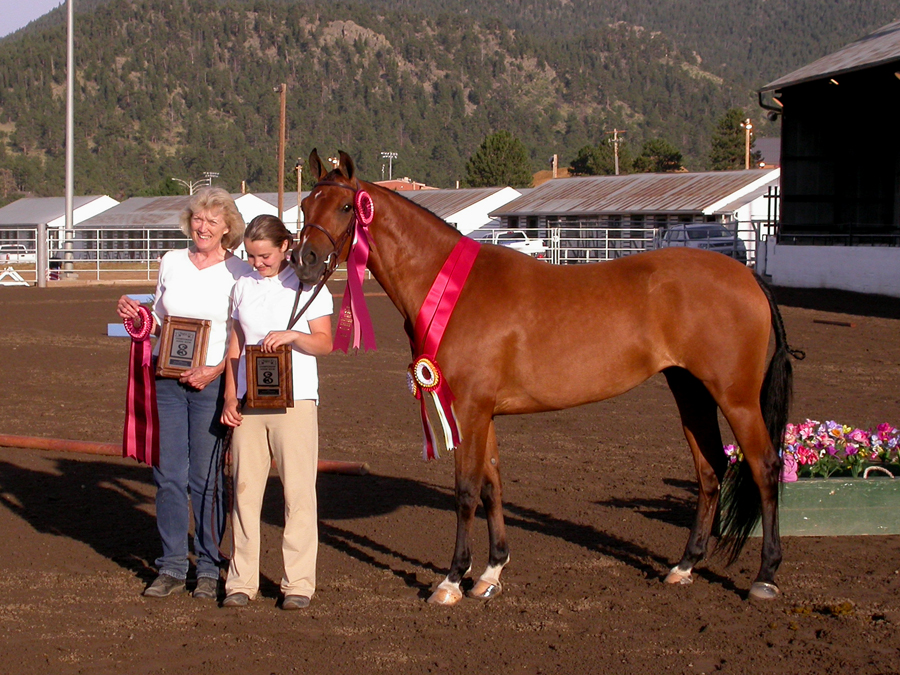 Bonnie and Kara Wintersteen with WA Borkata after winning Region VIII Reserve Champion Mare SHIH at Estes Park, CO.
Bonnie and Kara Wintersteen with WA Borkata after winning Region VIII Reserve Champion Mare SHIH at Estes Park, CO.
July 3, 2007
I have always equated a love of horses with a sickness that can wreak havoc on your finances and relationships if you are not careful. Perhaps it is genetic, perhaps it is environmental — I tend to lean to the former and think it can more often be found in the females. How else could you explain the multitude of young girls at horse shows on any given weekend across the country? Their population would dwarf the males by 4 to 1 by my estimation. My niece Kara has the affliction, but this has its blessings as my parents will always have help on the farm where work is plentiful.
It also provided the farm with a homebred Regional Champion as Borkata won Region VIII Reserve Champion Mare both Open and ATH in Sport Horse In-hand. The three-year-old filly was taking a break from her training at the track. It was not the result of a master plan developed over the long winter; more of a result in the filly not quite ready for the Colorado Breeders Cup (CBC) race scheduled for the 8th, so we decided to take some time off and shoot for the CBC money in SHIH at Estes Park where she was also eligible. A reserve championship and finishing second out of 11 in the regional pre-show gave reason for the family to huddle again. My niece assured me she could do 10 points better next go around, so she got her shot. Now she is formulating a plan for Nationals, like I said…
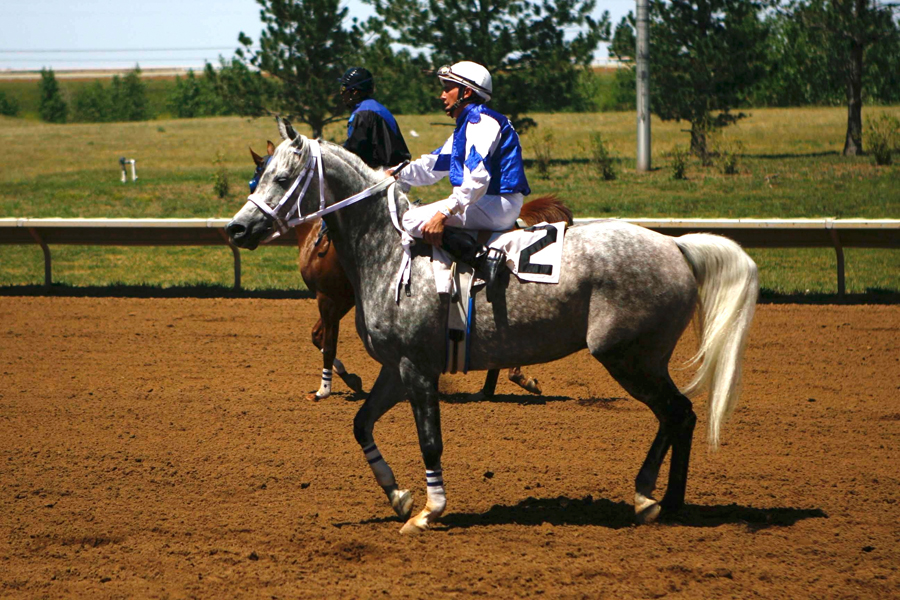 Marc and WA Emaranta (*Emanor x Melissa SA by Bandit SA) returning from race at Arapahoe Park on Arabian Race Day.
Marc and WA Emaranta (*Emanor x Melissa SA by Bandit SA) returning from race at Arapahoe Park on Arabian Race Day.
July 8, 2007
Colorado Arabian Race Day at the track means a full-day affair. Put together in cooperation with the Colorado Arabian Breeders Alliance (CABA) and Colorado Owners and Breeders of Racing Arabians (COBRA), it is a day to introduce people to Arabian racing, with talks, tours, races and perhaps most important for some, free lunch at the track. For me it is a full morning with getting Borkata to the gates early, shoeing Brilliance, then saddling Emaranta in the 4th and everything that comes with that. All this will be done in the baking sun, highs will be deep into the 90s.
Borkata was near perfect on her gate work. The track starter Shaun says, “One more time and we are there,” in his calm demeanor, strange coming from such a hulk of a man. Must be habit from someone who makes his living cajoling naturally claustrophobic creatures into confined spaces.
Emaranta ran huge till the quarter, only half a length back and a hole opening up on the inside. For the briefest of moments I thought this was her day, but there was no response. Looking at the race replay later, seems she did everything on her own, never asked down the lane. Could be my fault for the 2-minute mile four days ago that left her short, but I have a sneaking suspicion we might need a change in riders. The jockey fee of $40 per mount plus 10% of a few thousand for only the winner’s purse is not incentive enough on its own. It requires the same innate courage as a fireman that runs towards the fire or a soldier to the fight, to make that push into flying dirt and hooves, perched precariously on a straining beast. I harbor no ill will to those that do not possess it, but that doesn’t mean I want them on my horse come race day. A difficult choice as I greatly appreciate Marc’s loyalty, but it is still mine to make.
The fillies have their legs wrapped and are ready to go home. It is hot, dusty and both humans and horses are tired. Dad is paying a few bills, so I leave my niece in charge at the stalls. As I load my son into the car, I hear 4 minutes to post for race 6 over the track PA. The sixth is an open allowance for boys that will pit the some of the best of the country against each other. Earlier the track handicapper told our tour group it would be the race of the day. Made me smile to hear him talk about an Arabian race that way. As I strapped Flynn into his car seat, I asked if he would like to see it. “Yeah” was his enthusiastic response.
I drove through the backside to a small trainer’s parking area overlooking the quarter pole, the distance down the stretch to grandstands and wire. The announcer is barely audible through the open windows of the car. The gates pop open at the 7-furlong pole over half a mile away. There is a flood of color onto the track and the field starts rolling down the backstretch in near silence. As they start into the turn the first sound to reach us is the horses’ breathing, it is soft and muted, next comes their hooves striking the freshly tilled track. SW Zell (Zachzell x Bozell), a potential Darley winner, is favored, but I am rooting for SE Bunker Buster (Burning Sand x Soaring Alee). Bunker, a stout liver chestnut, though not very tall is endowed with athletic talent and heart. His dam was second in the AJC Oaks in Delaware. I talked with Jose Torres, who has the mount on Bunker, earlier in the day; he was excited at his chances. Jose is as talented as they come, and there are days, if he is patient, he can be masterful. I hope he has one of those days.
I see Jose in the yellow silks let Bunker out a notch as they near the end of the turn and I cringe at Jose’s decision, too early I say to no one but myself. Bunker flattens his ears and has the lead in two strides, Zell still sitting off his flank. I yell encouragement out the open window. The next sound to reach us is like large sporadic drops of rain hitting the windshield, but it is the jock’s sticks finding the sides of their mounts. Even with us now, Zell is asked and draws up with Bunker, who fights to hold him off. But Bunker is empty, and Zell is by. It is silent again, except for the soft drone of the announcer in the distance and then a the surge of noise from the crowd as the horses hit the wire. Zell wins, Bunker dug deep to hold on for second.
I turn on the car and head out of the west end of the lot, blackened skies over the front range hold a promise of needed rain. I hear the soft snore of my son in the back seat. Zell is a worthy winner, but Bunker has danced every dance and always gives his all. I think that counts for something.
July 20, 2007
Horses generate far more expenses than just feed and shoes as anyone who has ever spent any length of time with the creatures would know. Running in from the pasture, the herd, with the newest Pejczyk colt in the lead, decided to end their charge a little belatedly. The foal was “teakettled” (my father’s description) by his three year-old full sister. This sent him headlong into the metal gate, breaking both his upper and lower jaw, and knocking out a fair amount of his teeth. This happened a few days ago and he was rushed to Littleton Equine for surgery. The good news is he will make a full recovery, with the only evidence that will remain as an adult is a little more frequent dental care. The bad news will come today as he is picked up and the bill paid. The filly who did the teakettling did not escape unscathed either, needing some stitches but otherwise will be fine. Horses will find any danger in the pasture, or failing that, will make their own. Reason enough we fret about posts, gate latches and holes almost constantly.
Another “medical” issue on the farm is too many testicles. The solution, albeit an easy one, is made more difficult by the finality of it. Any unshown, unraced colt that has never lost carries limitless hope to some future buyer. In theory anyway, but experienced breeders know few make it and there are far too many stallions compared to sires. I remember one May in Poland, we had just returned from a pasture full of yearling and two-year-old colts at Michałów. Dad asked Director Jaworówski how many he thought they would keep as stallion prospects. After a moment of thought Jaworówski replied, “One — maybe two,” then quickly added, “but this was a very good year!”
July 22, 2007
I was away for Emaranta’s second race of the summer, leaving my parents and another trainer to deal with prep and saddling. An absent trainer is work enough, further complicated in that Emaranta had yet to return to last year’s form in the afternoon despite some glowing morning workouts.
It was another crazy week, begun by thinking we would start Borkata with Emaranta sitting out as she seemed not quite right. Then I decide Borkata needs a rest too so both are out. Emaranta is back in when our race vet of almost a decade, Dr. Moak, proclaims no reason she can’t run. Dr. Moak is one of the best horseman I have ever known and sees things even great horseman never will. He keeps our horses sound, and almost entirely without medication or injections. Emaranta wasn’t hitting the ground quite right, causing a little inflammation in the knees, which, after resetting the shoes, it is now gone. Regardless the breed, “no foot, no horse” rings true.
With the same nervousness as if I was there, I watch Emaranta on the Live Feed dispatch a huge rally from 17 lengths back at the 3/8ths pole, getting up for third. It was elation for the family, not only did she return to last year’s form, but seeing Emaranta bouncing back to the barn — snorting with her tail over her back — made it clear she felt great physically and still enjoyed her job. Our new rider, a Mexican kid with a mouthful of a name, Guillermo Izquierdo, was thrilled, exclaiming “This filly never stopped trying!” There is no better compliment for an Arabian mare that gives my just turned 4-year-old son rides on her days off.
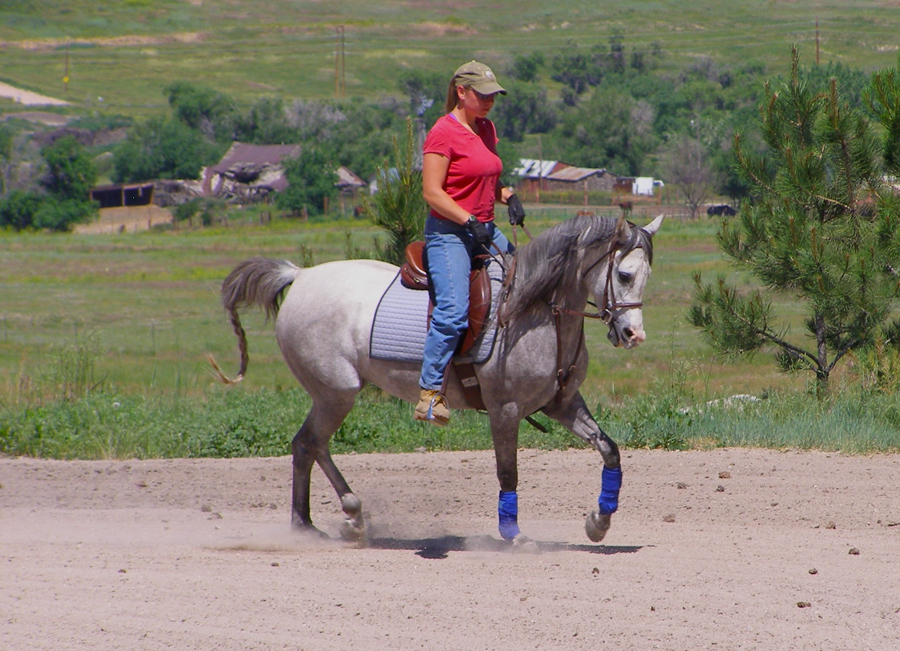 Kelly Harding preparing WA Elegancja (WA Pejczyk x Estansia by Monogramm) for the CAHC Fall Show.
Kelly Harding preparing WA Elegancja (WA Pejczyk x Estansia by Monogramm) for the CAHC Fall Show.
August 8, 2007
The summer heat is back after a brief monsoonal flow out of the Gulf of California that brought a daily drenching for more than a week. It was a welcome respite, but for a semi-arid land that is not used to so much moisture, the torrents of rain washed everything in its path. Therefore we needed to tractor in more sand (which is in great supply on the farm from the mostly dry creek beds) for the round pen. The pastures, however, are waist high, a beautiful sight in an afternoon breeze.
The summer race season is all but over — one weekend left but no races for our fillies. I swing through and clean out the tack stall, pick up papers, silks and settle any accounts. No horses will make the fall trip to Texas as Brilliance did last year. The economics of $900 a month plus vet bills means a filly needs to finish first or second every race. Texas is a deeper pool than Colorado — need to know they can swim before we throw them in.
I have always equated a love of horses with a sickness that can wreak havoc on your finances and relationships if you are not careful.
This doesn’t mean the work is over, already for the last couple months the farm has been in full swing with the show string getting ready for the Colorado Breeders Cup — all the Pejczyks and *Ecahos are eligible, plus a *Ganges colt to show in the Open. While I have been toiling at the track, my niece and contract trainer have been working these horses. With track horses done, I can help out conditioning the halter colts, a *Ganges and an *Ecaho — both two years old. They have been turned out “Polish style” with the other males on the farm. The nicks and bruises are testament to a playful summer. They will be separated now for the remaining few weeks to “clean” them up a bit. Their forelocks stretch down to their muzzles, manes long, definition on their flanks… I like their look already. There will be no debate whether to clip the bridle paths, we won’t. In this heat it doesn’t take long to work up a sweat under the neoprene in the round pen.
Borkata is still in training, but of a different type. She got her gate approval and was ready to race, just didn’t get a start before the end of the meet. She did everything right, but we didn’t want to rush her. “Only three,” dad says, “we do right by her and she will do right by us.” Next year, we hope, will be her time to shine, both racing and at Sport Horse Nationals. No rest yet, however, as she will go to back to the halter ring, and possibly under saddle, to help her sire earn stallion award points for the CBC. Quite a summer so far as she won Regional Reserve Champion in SHIH — a blue-collar filly that has already done “right by us.”
September 4, 2007
I can finally feel fall in the early morning air, the chill is fleeting, but promises an end to the dog days of summer. The fall show is over and, as with any show, we had both our successes and disappointments. The successes will be remembered by garlands, photos and ribbons hanging in the tack room, the disappointments for only a week more. At the moment, however, the most overwhelming feeling is fatigue. These shows are a full family affair, whether setting up the drapes at the stalls, multiple trips hauling horses, or on our knees sanding halter horses’ feet. When the Wednesday to Sunday (not counting prep days) show was over, we had a Labor Day picnic at the farm to recharge our batteries. Only my four-year-old son still had energy reserves to show off by driving his John Deere Gator no-handed to the delight of the family.
In all we had eight horses that showed in halter and performance classes. The farm won four championships in the Colorado Breeders Cup, a number of class wins and a championship in the class A show. Our blue-collar filly Borkata picked up a check in both her halter and hunter pleasure classes. That she went from the track to a controlled hand gallop in the show ring with a recently turned 15 year old in the irons a couple weeks later is testament to a three year old with a great mind.
The next week will be spent getting long-needed video of sale horses, sending out stallion promotions and all the other tasks put on hold as we prepared for the show. I am looking forward to the more casual pace of fall, and starting the two-year-old colts in the long lines.
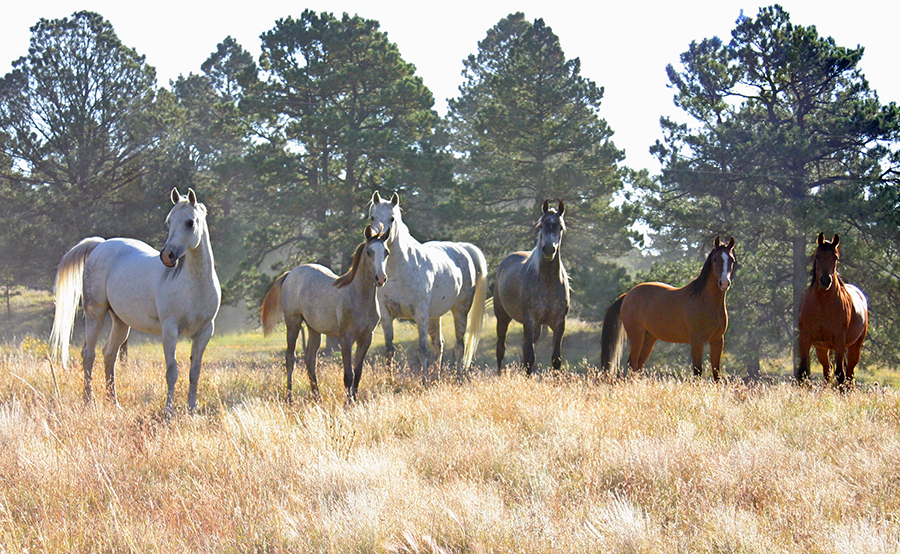
September 21, 2007
This is my favorite time of the year in Colorado. The high plain’s cottonwoods are just starting to hint at the luminous gold they will soon turn — higher up, the aspen are already there. The nights are cool and finally back to some decent sleeping weather. The days are filled with pleasant sunshine, something to soak in rather than avoid. The sky has also turned an azure and completely cloudless blue that has made the state famous.
I resolve to try and help Brilliance settle into retirement before the first snow. Brilliance ran her 16th and last race in July. Since Brilliance was 7 years old and already proved she can win, I wanted to do right by her, and called it a career. Hopefully a few bareback rides and some trips to explore new trails will be just what is needed. No doubt my tall bay mare is not handling being unemployed very well right now. “She is just feels too good, doesn’t know what to do with herself,” my father reports.
October 9, 2007
For hundreds of years for farmers in the west, fall has always meant putting up hay for the winter. We carry out the tradition on a beautiful October day — 135 bales to a load. Only forty five degrees this morning meant digging out the Carharts buried since spring, but by mid-morning we are down to t-shirts and drinking long pulls from the water bottles. An overflow of horses means the hay barn has been converted to stalls, which also means the hay is now outside needing to be covered. Four-year-old Flynn proudly climbs the stack to help hang tarps, and asks innocently, “Are you guys sure the horses will eat all of this?”
After a break for a snack, mom, son and grandson go for a ride. I get Brilliance saddled honoring my commitment to help her cope with her retirement from racing. Brilliance had been playing musical stalls, but is now more comfortable with the older mares. Dad says she just wanted away from the “kids barn.” Flynn rides Godiva SA (Najarian x SA Gdandria) alone in the arena while we get ready — not the first grandchild Godiva has been entrusted with. When my niece was about the same age she would shimmy up Godiva’s leg like a pole to get in the saddle. At that point we figured Godiva was broke. She can no longer carry a foal to term, but Godiva’s role on the farm isn’t any less important. My mom rides Melissa SA (Bandit SA x Mustamagic) and I smile at thought of two grandmothers taking the younger generation for a ride. With more confidence than his experience warrants, Flynn doesn’t want Granny to pony him as we head out to the pasture. My son chatters on, Godiva flicking her ears back every now and then, wondering if this is something she should be paying attention to. The temperature is pushing high 60s, and the sun feels warm on my back. I soak in the moment, committing it to memory for future years.
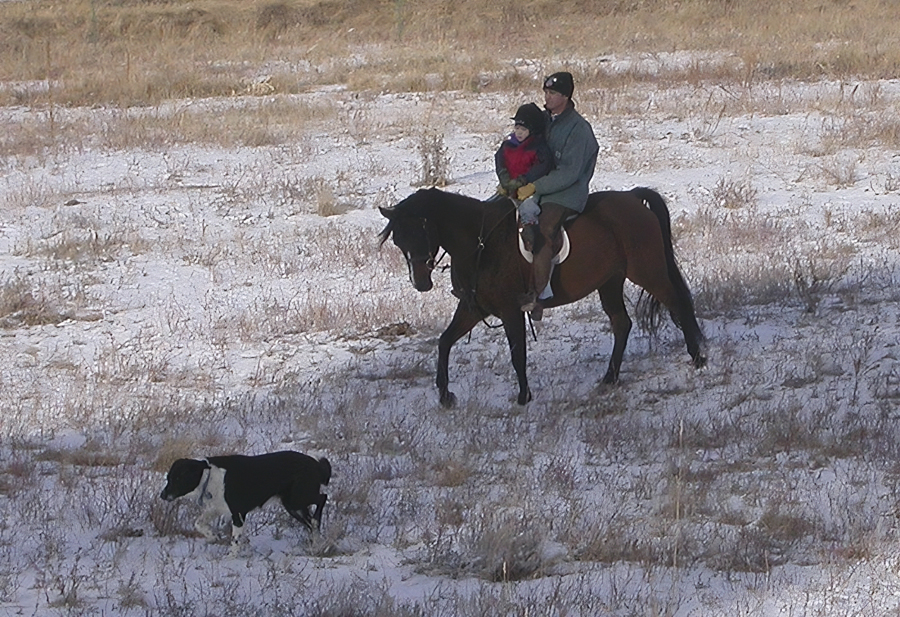 Brilliance SF (*Pepton x Billant Light by *Probat) taking Jeff and Flynn for a Thanksgiving Day ride.
Brilliance SF (*Pepton x Billant Light by *Probat) taking Jeff and Flynn for a Thanksgiving Day ride.
November 27, 2007
It was a beautiful day in Colorado for Thanksgiving. A dusting of snow and temps in the mid 30s, but in the still-dry air, the sunshine makes it feel warmer. The big activity of the day, besides eating of course, was a trail ride with 14 friends and family on 12 of the farm’s horses. The idea originated with mom, Kara and family friend Tisa. They did the bulk of the organizing, no small task when one considers matching horse, rider, saddle and tack. They labored a few hours making lists and putting together bridles.
Not all of the riders were experienced, nor were all the horses for that matter. The riders ranged in age from four years old to mid-70s, the horses from 3 to 22. What made me even prouder were three of the horses had spent their summer on the track, a testament to the soundness of mind and disposition of a well trained racehorse.
My son insisted on riding seven-year-old Brilliance who has raced the entirety of his four-year-old life. He has only known going to the track for her important morning works, cheering her in our colors Saturday afternoons in Colorado, or via simulcast during her two autumn campaigns in Texas. Like an older sibling whose athletic exploits you admire, no surprise when he has his choice of mounts, it is always Brilliance.


